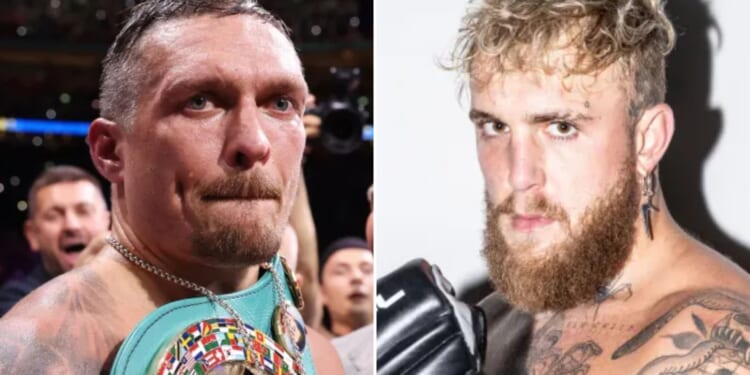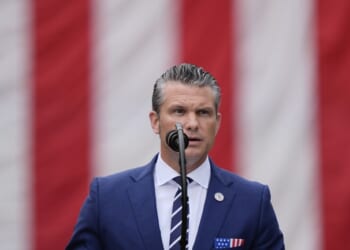European and Ukrainian leaders will hold a video call with U.S. President Donald Trump on Wednesday in a bid to persuade him not to sell out Ukraine and give in to Putin‘s demands to secure a ceasefire.
A meeting with European leaders will come just two days before Trump and Putin meet in Alaska for crunch talks on the fate of war-weary Ukraine.
Putin, shunned by much of the West since ordering the 2022 invasion of Ukraine, will meet Trump on Friday in what the U.S. president has described as a ‘feel-out’ discussion aimed at ending the war.
The uncertainty over what the Alaska talks could produce has raised fears in European capitals that Trump and Putin might take major decisions without Kyiv’s involvement.
There are also concerns that an agreement may force Ukraine into accepting a settlement on disadvantageous terms.
It comes a day after Russia made a key battlefield breakthrough in Ukraine as Putin races to secure as much land as possible before he meets Trump.
Moscow has reportedly already seized more than 10 kilometres (six miles) of land in its lightning offensive.
Meanwhile, Hungarian prime minister Viktor Orban has declared that Russia has already emerged victorious in the war.
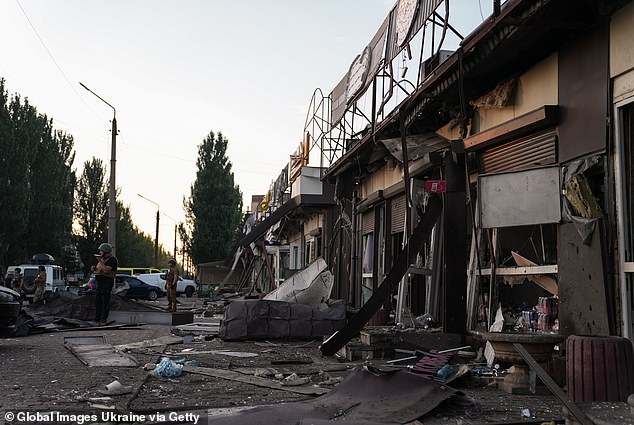
A strike in Dobropillia, Dontesk Oblast, Ukraine, destroys buildings last last month
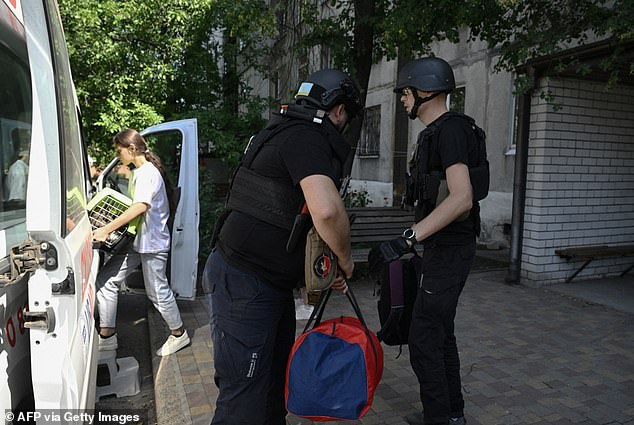
Authorities help evacuation efforts in Dobropillia on Sunday as Putin’s forces make a key breakthrough

Servicemen of 152nd Separate Jaeger Brigade of the Ukrainian Armed Forces fire a 2S1 Gvozdika self-propelled howitzer towards Russian troops in a front line, near the town of Pokrovsk in Donetsk region, Ukraine August 5, 2025
Speaking about the possibility of a deal that could put Ukraine at a disadvantage, a senior official from Eastern Europe said: ‘We are focusing now to ensure that it does not happen – engaging with U.S. partners and staying coordinated and united on the European side.
Trump’s team on Tuesday sought to lower expectations of a breakthrough, calling the meeting with Putin in Alaska a ‘listening exercise.’
According to a German government spokesperson, the video conference will take place at 1200 GMT (1400 CET) and will bring together Trump, Ukrainian President Volodymyr Zelenskiy, the leaders of Germany, Finland, France, Britain, Italy, Poland and the European Union, as well as NATO’s secretary general.
Kyiv hopes the discussions will help form a European counterbalance to whatever comes out of the Alaska summit.
European governments have publicly welcomed Trump’s push for peace while stressing that any agreement about Ukraine must include Ukraine at the table.
Several senior European officials have warned that they see a real possibility of a settlement that would undermine both European and Ukrainian security.
A source familiar with internal U.S. debates said it was possible Trump could seek to strike a deal directly with Putin without input from Europe or Ukraine.
White House press secretary Karoline Leavitt told reporters on Tuesday that the Alaska summit will be a ‘listening exercise’ for Trump to learn what would be needed to reach an agreement.
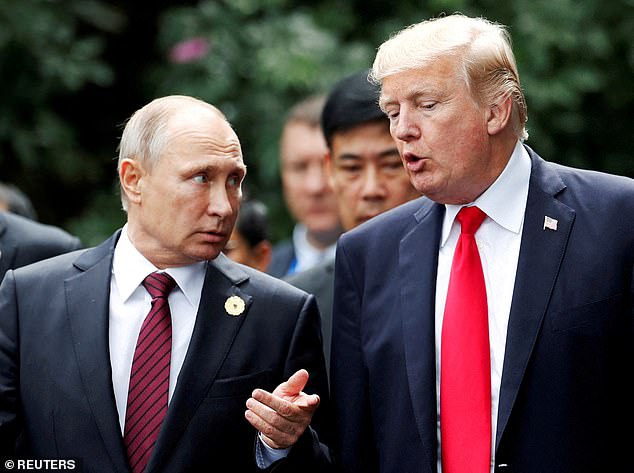
Putin and Trump’s meeting on Friday has left European leaders concerned that a deal might be reached that could put Ukraine at a disadvantage

A serviceman of 152nd Separate Jaeger Brigade of the Ukrainian Armed Forces checks the sky to look out for Russian combat drones, near the town of Pokrovsk in Donetsk region, Ukraine August 5, 2025
The meeting comes ahead of Orban’s declaration of victory, calling the war in favour of Russia.
Orban, who has led Hungary since 2010, has faced criticism from other European leaders over his government’s warm relationship with Moscow and his opposition to supplying weapons to Kyiv.
On Monday, he stood apart as the only European Union leader who declined to back a joint statement affirming Ukraine’s right to determine its own future.
In an interview with the Patriot YouTube channel, he said: ‘We are talking now as if this were an open-ended war situation, but it is not. The Ukrainians have lost the war. Russia has won this war.
‘The only question is when and under what circumstances will the West, who are behind the Ukrainians, admit that this has happened and what will result from all this.’
Hungary, which relies heavily on Russian energy supplies, has refused to provide arms to Ukraine. Orban has also pushed back against Kyiv’s bid to join the EU, warning it would damage Hungary’s agricultural sector and broader economy.
In the interview, he also said that Europe had missed an opening to reach an agreement with Putin when former US president Joe Biden was in charge. He said: ‘If you are not at the negotiating table, you are on the menu.’
His comments come as the Ukrainian military estimated that some 110,000 Russian troops were advancing in the direction of Pokrovsk in what may prove to be a major breakthrough for Vladimir Putin. Urgent evacuations are now underway in the region.
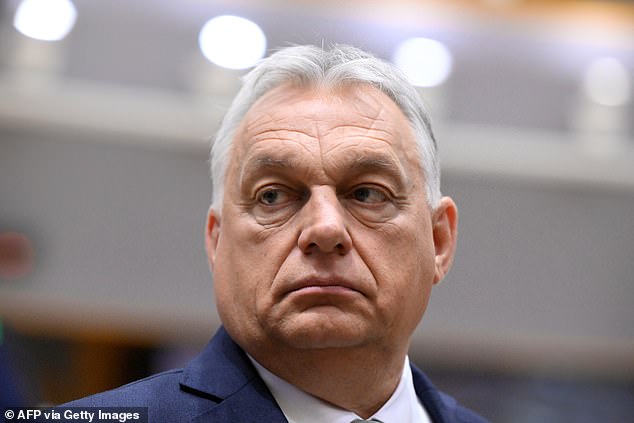
In an interview with the Patriot YouTube channel, he said: ‘We are talking now as if this were an open-ended war situation, but it is not. The Ukrainians have lost the war

Ukrainian service members of the 25th Sicheslav Airborne Brigade fire a BM-21 Grad multiple rocket launch system towards Russian troops near the frontline town of Pokrovsk, in Donetsk region, Ukraine April 19, 2025
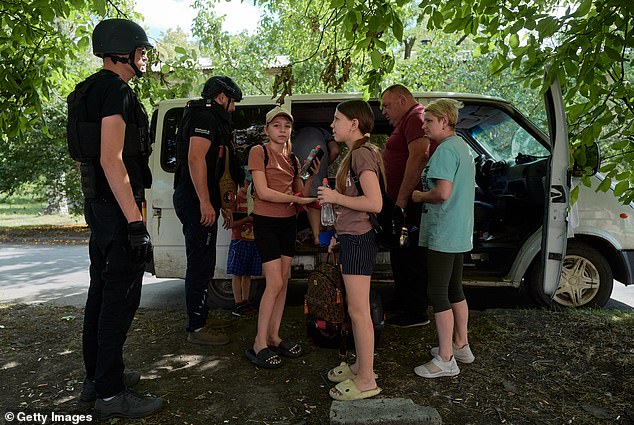
Urgent evacuations are underway in Pokrovsk as Putin’s troops advances

Trump has described his summit with Putin on Friday as a chance to check the Russian leader’s ideas for ending the war
‘Our units are waging heavy defensive battles against superior enemy forces,’ the General Staff of the Armed Forces of Ukraine wrote on Telegram, adding: ‘The situation is difficult and dynamic, but the Defence Forces are taking all necessary measures to detect and destroy enemy groups.’
Kyiv has diverted special forces units to hold off the Russian advance on the ground in an effort to avoid Putin’s forces from gaining ground.
The Ukrainian army said it was engaged in ‘heavy’ battles with Russian forces attempting to penetrate its defences. ‘The situation is difficult and dynamic,’ it said in a statement.
A map published by Ukrainian battlefield monitor DeepState, which has close ties with Ukraine’s military, showed Russia had advanced around 10 kilometres (six miles) over around two days, deep into a narrow section of the eastern front line.
The corridor – now apparently under Russian control – threatens the town of Dobropillia, a mining hub that civilians are fleeing and that has come under Russian drone attacks.
It also further isolates the destroyed town of Kostiantynivka, one of the last large urban areas in the Donetsk region still held by Ukraine.
The Ukrainian military reported that defenders were holding off advancing troops moving on Dobropol and Pokrovsk.
‘Our units are waging heavy defensive battles against superior enemy forces. Thus, in the Pokrovsk direction alone, the invaders have concentrated groups numbering over 110 thousand personnel,’ the General Staff of the Armed Forces of Ukraine wrote on Telegram.
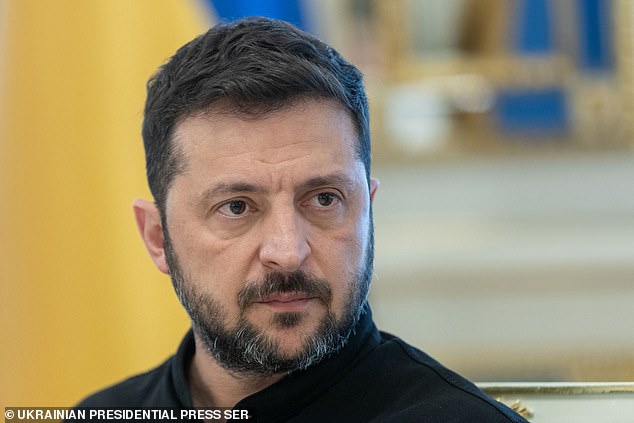
Ukrainian leader Volodymyr Zelensky warned ahead of the talks that Moscow was laying the groundwork for further attacks
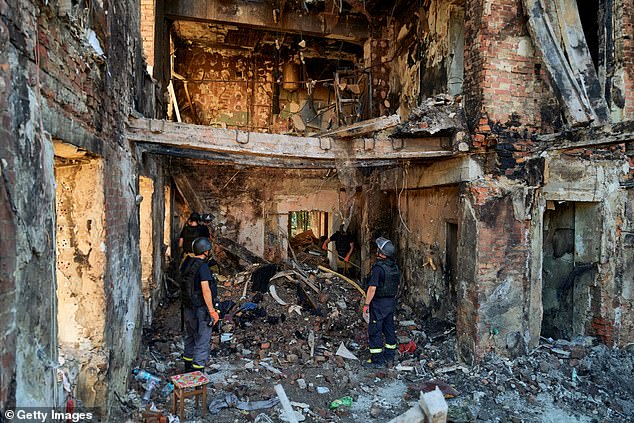
Trump has described his summit with Putin on Friday as a chance to check the Russian leader’s ideas for ending the war
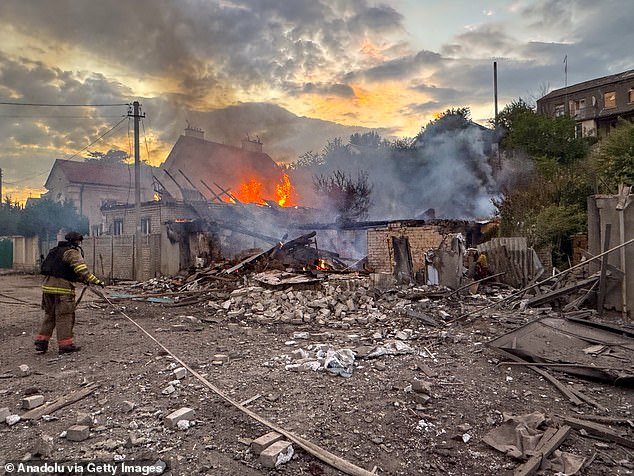
Kyiv has diverted special forces units to hold off the Russian advance on the ground in an effort to avoid Putin’s forces from gaining ground
‘Some of the groups have already been destroyed, the rest are in the process of being destroyed,’ the statement added.
‘The situation is difficult and dynamic, but the Defense Forces are taking all necessary measures to detect and destroy enemy groups […] Additional forces and means have been allocated to strengthen the stability of the defense. Measures have been planned to block enemy groups in a certain area.’
‘The situation is quite chaotic, as the enemy, having found gaps in the defence, is infiltrating deeper, trying to quickly consolidate and accumulate forces for further advancement,’ DeepState said on its Telegram channel.
The Institute for the Study of War, a US-based observatory, said Russia was sending small sabotage groups forwards.
It said it was ‘premature’ to call the Russian advances in around Dobropillia ‘an operational-level breakthrough’.
The military’s Operational-Tactical Group Donetsk, which oversees parts of the front in the industrial region, also said Russia was probing Ukrainian lines with small sabotage groups, describing battles as ‘complex, unpleasant and dynamic’.
Ukrainian leader Volodymyr Zelensky warned ahead of the talks that Moscow was laying the groundwork for further attacks, after Trump said on Monday that both sides would have to swap territory for peace.
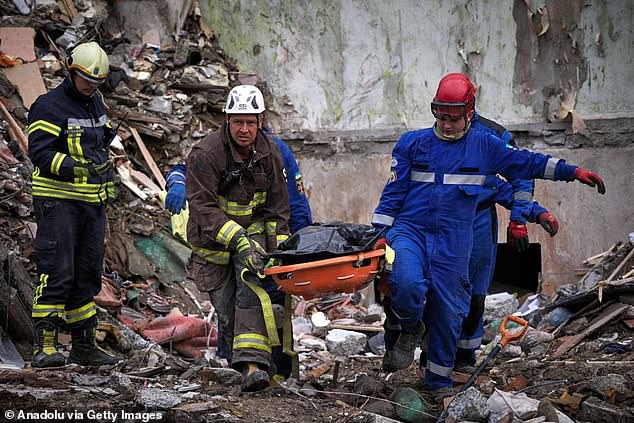
Emergency workers carrying the bodies of people killed in Russian strikes last month
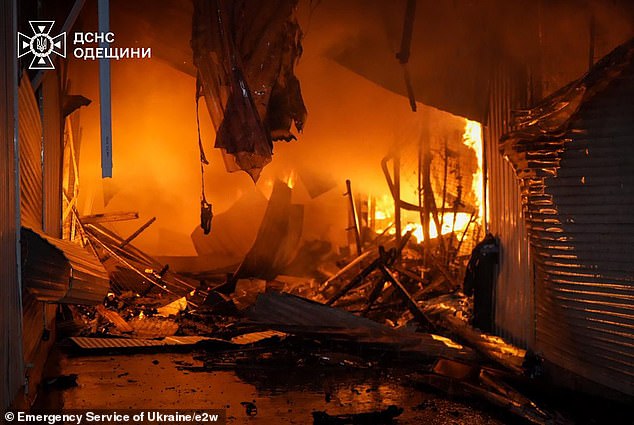
The devastating aftermath of a Russian attack earlier this year
‘We see that the Russian army is not preparing to end the war. On the contrary, they are making movements that indicate preparations for new offensive operations,’ Zelensky said in a statement on social media.
Ukraine reported in late June that Russia had amassed 110,000 troops near Pokrovsk as part of its efforts to take over the strategic city in eastern Ukraine.
Russia, which invaded Ukraine in 2022, has made costly but incremental gains across the sprawling front in recent months and claims to have annexed four Ukrainian regions while still fighting to control them.
Ukrainian police, meanwhile, said that Russian attacks in the past hours had killed three people and wounded 12 others, including a child.
Ukraine’s military said it had sent in reserves near the cities of Pokrovsk and Dobropillia to block advances by small groups of Russian troops.
In a statement, the General Staff said some of the groups attempting to bypass Ukraine’s defensive lines in the area had already been destroyed, and that others were being engaged by Ukrainian forces.
Dobropillia is 94 kilometres (58 miles) northwest of Russian-occupied Donetsk, and around 22 kilometers (14 miles) north of Pokrovsk.
Earlier today, the Kyiv Independent reported that the Russian military is employing infiltration tactics, by sending small groups of soldiers beyond the first line of defense, often incurring significant losses.
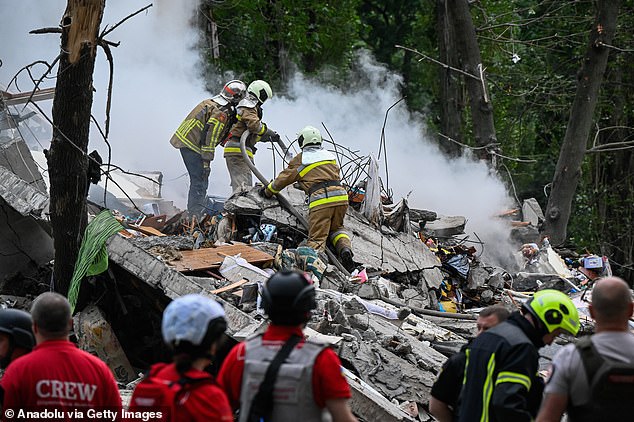
Emergency service teams working to pull out people trapped under the rubble after a Russian attack earlier this year
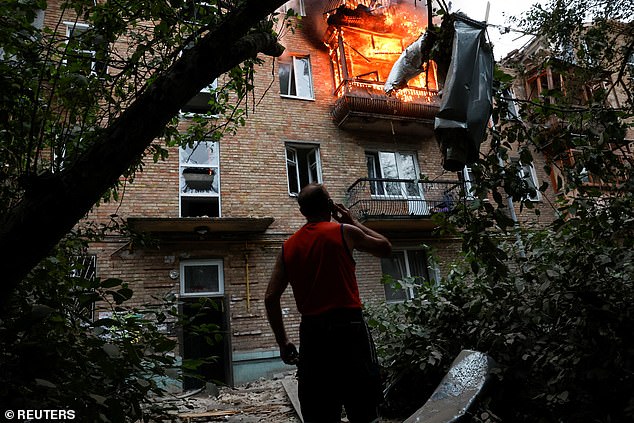
Residential buildings have been targeted since Putin started the war in Ukraine
‘A number of small Russian groups are constantly putting pressure on Ukrainian positions and attempting to bypass the first line of defense,’ said Victor Tregubov, spokesperson of the Dnipro group of forces.
‘It is important to understand that this does not mean Russian forces have taken control of the territory,’ the spokesperson added.
Trump has said that both Kyiv and Moscow will have to cede territory to end the war in Ukraine, so how much territory does Russia control in Ukraine?
Russia controls nearly 114,500 square km (44,600 square miles), or 19%, of Ukraine, including Crimea, and a major chunk of territory in the east and south-east of the country, according to open-source maps of the battlefield.
Ukraine does not control any internationally recognised Russian territory.
Russia says Crimea, Donetsk, Luhansk, Zaporizhzhia and Kherson – which were recognised by Moscow as part of Ukraine as the Soviet Union collapsed – are now parts of Russia.
Ukraine has repeatedly said it will never recognise Russian occupation of its land, and most countries recognise Ukraine’s territory within its 1991 borders.
Following are details on the territory, Russian claims and Ukraine’s position.
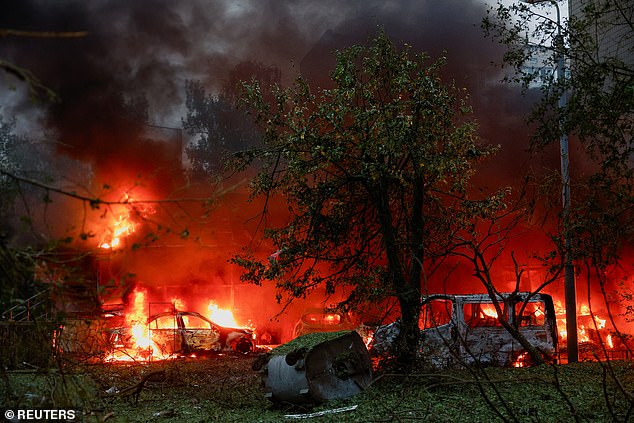
Trump has said that both Kyiv and Moscow will have to cede territory to end the war in Ukraine
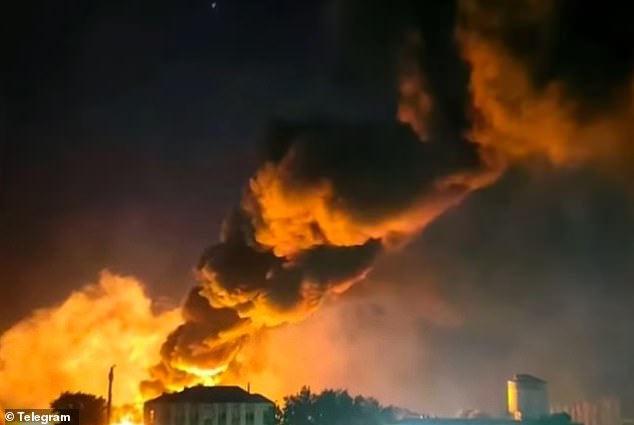
Last month, 16 people were killed and 35 more were injured after a Russian strike on a correctional facility
Russian forces in 2014 took control of Crimea, which juts out into the Black Sea off southern Ukraine, and after a disputed referendum on joining Russia, Moscow absorbed the region into Russia. Its area is about 27,000 square km.
Russia says Crimea is legally part of Russia. Ukraine’s position is that Crimea is part of Ukraine, though privately some Ukrainian officials admit that it would be very hard to return Crimea to Ukrainian control by force.
Crimea was absorbed into the Russian empire by Catherine the Great in the 18th century. Russia’s Black Sea naval base at Sevastopol was founded soon afterwards.
In 1921, Crimea became part of Russia within the Soviet Union until 1954, when it was handed to Ukraine, also then a Soviet republic, by Communist Party chief Nikita Khrushchev, an ethnic Ukrainian.
Russia controls about 46,570 square km, or 88%, of the Donbas region of eastern Ukraine, including all of the Luhansk region and 75% of the Donetsk region.
About 6,600 square km is still controlled by Ukraine but Russia has been focusing most of its energy along the front in Donetsk, pushing towards the last remaining major cities.
Russian-backed separatists in the Donetsk and Luhansk regions broke away from Ukrainian government control in 2014 and proclaimed themselves independent ‘people’s republics’.
Putin in 2022 recognised them as independent states just days before the invasion of Ukraine.
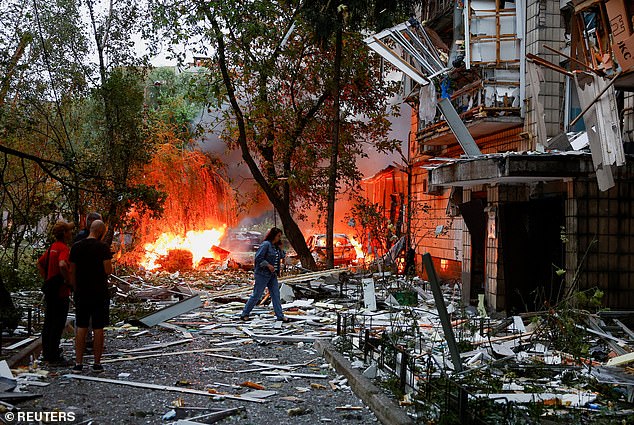
The Russian president has laid out a list of demands in order to stop his offensive on Ukraine
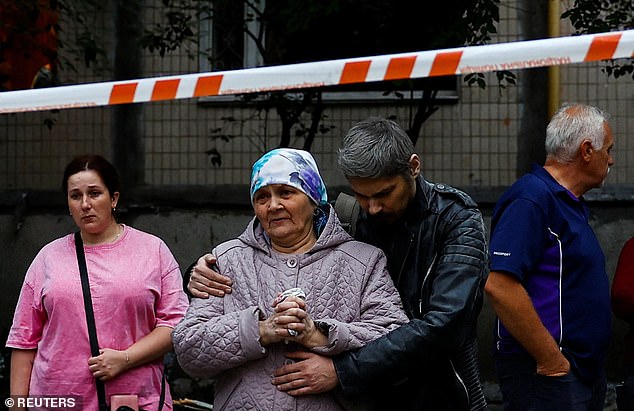
Residents react after a deadly strike on apartment buildings in Ukraine
Russian forces control about 74% of the Zaporizhzhia and Kherson regions of southeastern Ukraine, or about 41,176 square km. Ukraine controls about 14,500 square km across the two regions.
In 2024 said that he would be willing to agree peace if Ukraine withdrew from all regions claimed but not fully controlled by Russia – an area currently of about 21,000 square km – and officially renounced its ambitions to join NATO.
Reuters reported in 2024 that Putin was open to discussing a Ukraine ceasefire deal with Trump, but ruled out making any major territorial concessions and insisted that Kyiv abandon ambitions to join NATO.
Two sources said Putin might be willing to withdraw from the relatively small patches of territory it holds in other areas of Ukraine.
Putin’s conditions for peace include a legally binding pledge that NATO will not expand eastwards, Ukrainian neutrality and limits on its armed forces, protection for Russian speakers who live there, and acceptance of Russia’s territorial gains, sources told Reuters earlier this year.
Russia also controls small parts of the Kharkiv, Sumy, Mykolaiv and Dnipropetrovsk regions of Ukraine. Across the Sumy and Kharkiv regions, Russia controls about 400 square km of territory. In Dnipropetrovsk, Russia has a tiny area near the border.
Russia has said it is carving out a buffer zone in Sumy to protect its Kursk region from Ukrainian attack.


